TABLE OF CONTENTS
Does your M.2 SSD need a heatsink? If so, will the one included with your motherboard suffice?
I‘ll be tackling both these questions and all you need to know about SSD heatsinks, in general, below!
Let’s not waste any time, and dive right into it.
A Brief on SSD Heatsinks
Compared to the 2.5-inch and 3.5-inch drive enclosures of old, the M.2 SSD design is insanely streamlined to a form factor more comparable to a thumb drive than a classic hard drive.
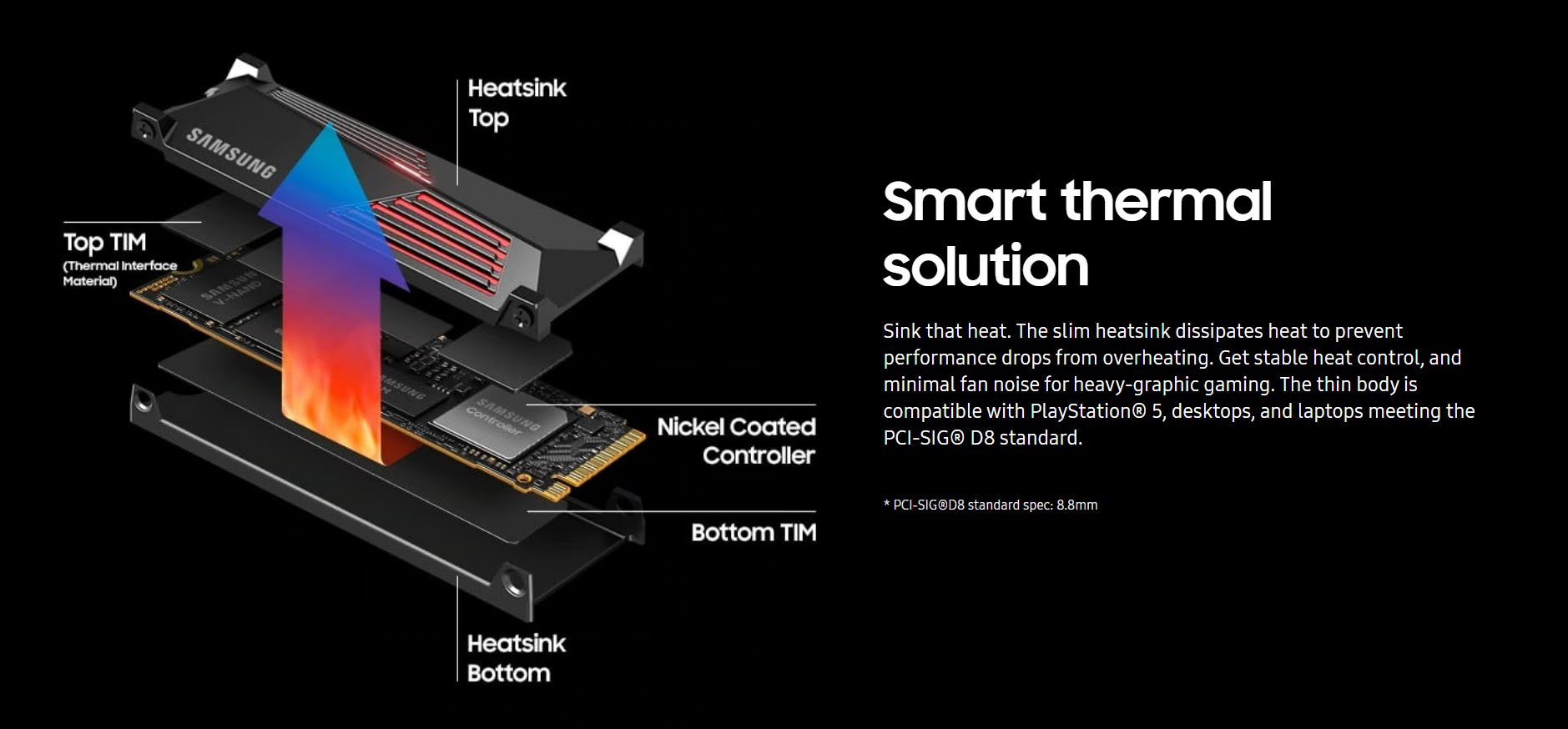
Image Credit: Samsung
However, this smaller form factor has not led to a reduction in power: in fact, M.2 SSDs can get faster and hotter than old drives ever could!
Why is this the case? Well, there are two types of M.2 SSDs: SATA M.2 and NVMe M.2. SATA, the slower standard, still matches speed with the old SATA cable used for much larger 2.5-inch and 3.5-inch drives.
Meanwhile, NVMe SSDs are capable of utilizing PCI Express bandwidth, which will always be the fastest available bandwidth on a given motherboard.
Does Your M.2 SSD Need a Heatsink?
So, does your M.2 SSD need a heatsink?
If you’re using an M.2 SATA SSD, certainly not. While it’s true that M.2 is a significant size reduction compared to the 2.5-inch form factor used by SATA SSDs, the bandwidth demands and thermals that come with them simply aren’t there.
Most NVMe Gen 3 SSDs ran fine without a heatsink, and those were exponentially faster than any SATA SSD.
If you’re using an NVMe M.2 SSD that is Gen4, 5 or newer, though, then you may need to consider a heatsink.
NVMe Gen 4 and Gen 5 SSDs without a heatsink can actually result in thermal throttling that slows down the drives under heavy load. That’s right— thermal throttling on a storage drive.
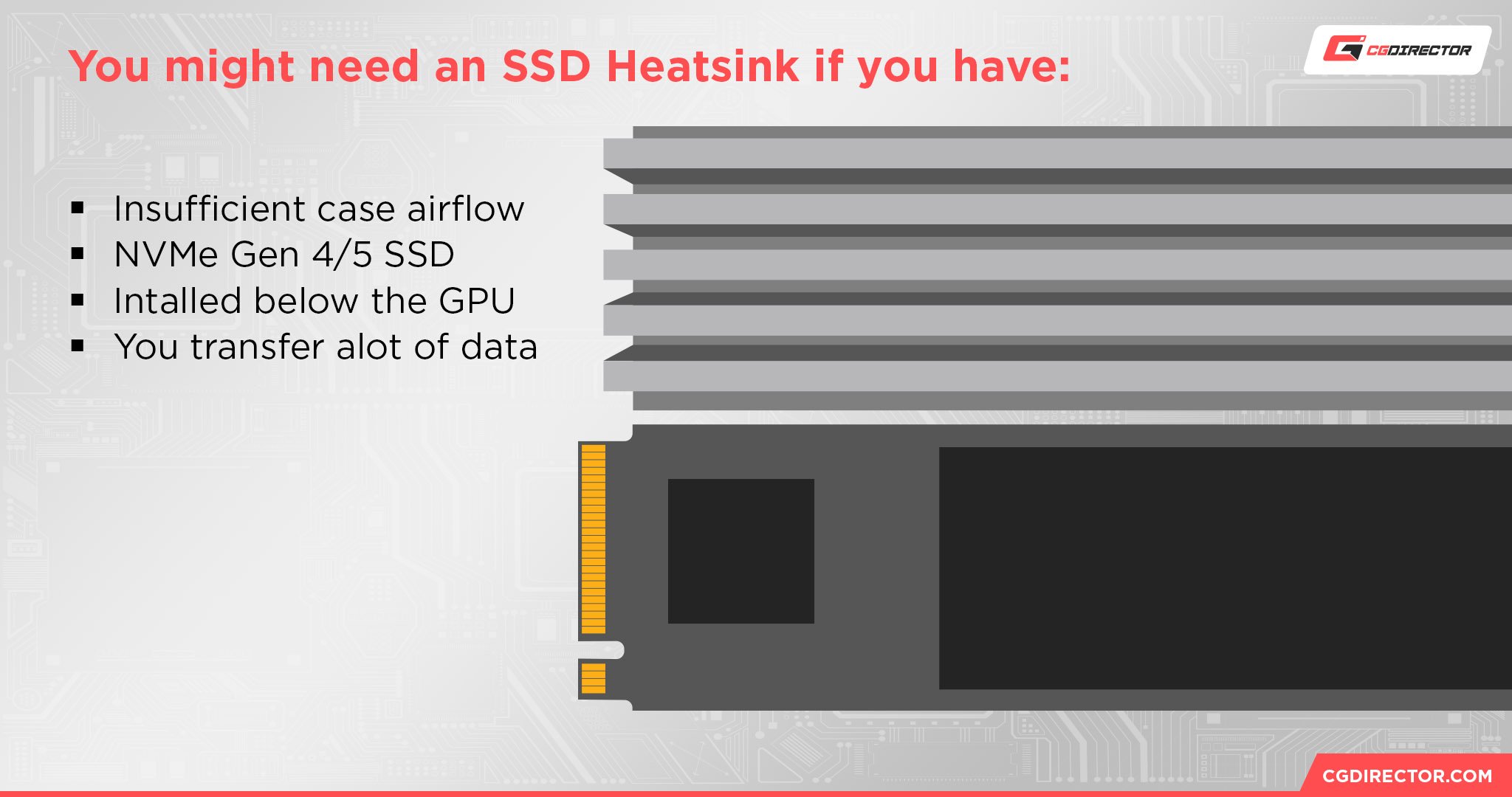
NVMe Gen 3 and lower-end NVMe Gen 4 SSDs can most likely work just fine without a heatsink, though. Just be sure to verify your temperatures and consider getting an NVMe heatsink if you find your drive is overheating.
Of course, the necessity of a heatsink for your Gen4, 5, or newer NVMe M.2 SSD also depends on how you’re using it. If it’s just everyday productivity work, then you won’t notice a difference with or without a heatsink. If you’re constantly copying hundreds of gigabytes of data to and from the drive, though, throttling is a very real possibility without a heatsink.
Guru3D has conducted tests with NVMe drives using several different heatsinks for comparison and concludes that, yes, indeed, heatsinks make a considerable difference in operating temperature and, therefore performance throttling:
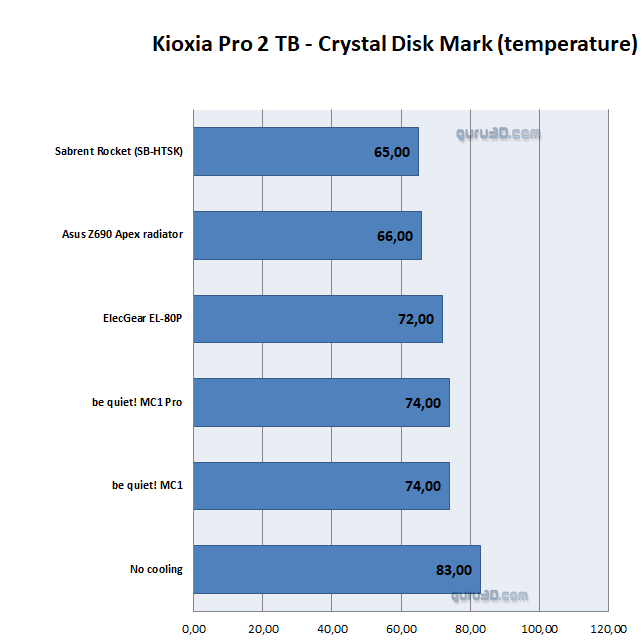
Image-Source: Guru3D
Is the Motherboard Heatsink Enough For NVMe SSDs?
In most cases, particularly with NVMe Gen 3 drives, there’s no reason to believe the included motherboard heatsink won’t do the job of keeping your drive within a reasonable temperature range.
If you’re hoping to keep a very particular aesthetic with your PC, it makes sense to use your included motherboard NVMe shield if at all possible— you might also save a few bucks on the drive without the heatsink this way.
However, with particularly high-end drives— especially NVMe Gen 5 and beyond— it may be best to use the included heatsink or buy a version of the drive with a heatsink.
Some NVMe Gen 5 drives are even getting fans, though that does seem to be a touch overkill and is far from universal. The average heatsink size is noticeably larger with Gen 5, though.
Over to You
And that’s all!
I hope this article helped you determine whether or not your M.2 SSD needs a heatsink. If it does, congratulations on the speedy NVMe drive! If it doesn’t, your PC cooling concerns are probably best focused elsewhere…like on your case fans, or something.
Anyway, it’s time to get wrapped up here. If you have any other questions about M.2 SSDs or PC hardware, don’t be afraid to ask in the comments below!
Me or another CGD member will help you as soon as we can. Alternatively, you can hang out on our Forum and interact with the rest of our community of Experts and Enthusiasts.
Until then or until next time, happy PC building and tweaking! May your SSD last long and run cool.
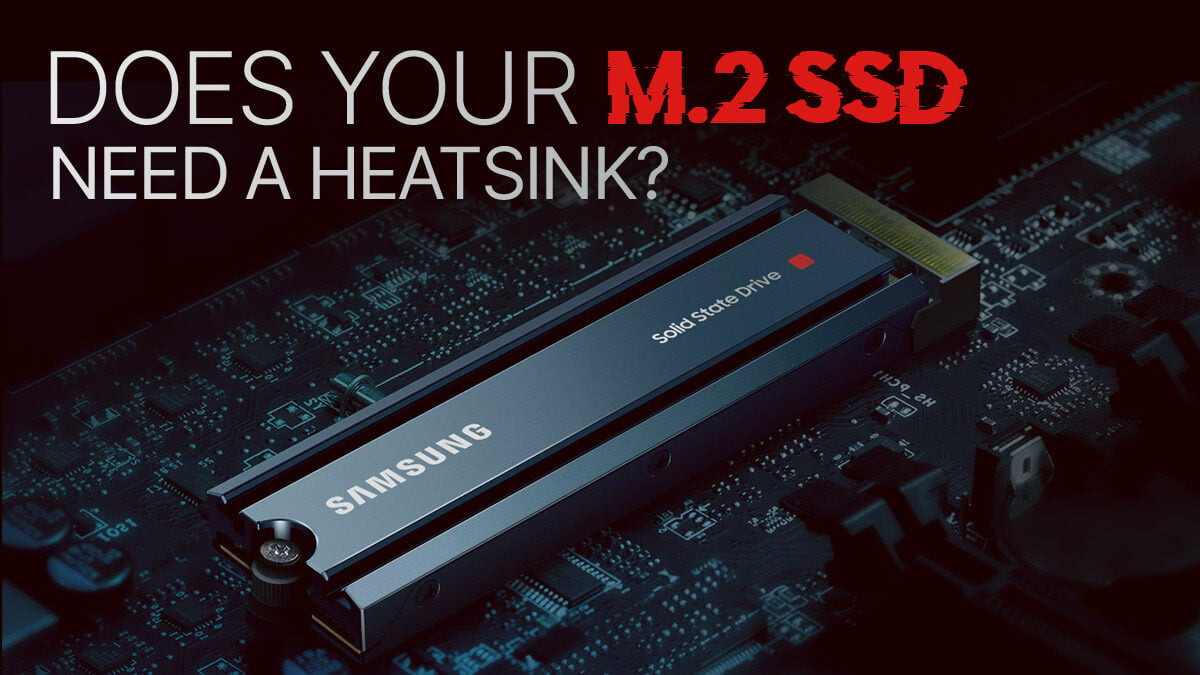
![The Best NVMe SSDs Available Today [Updated] The Best NVMe SSDs Available Today [Updated]](https://www.cgdirector.com/wp-content/uploads/media/2020/01/BestNVMeSSDs-FTwitter_1200x675-594x335.jpg)
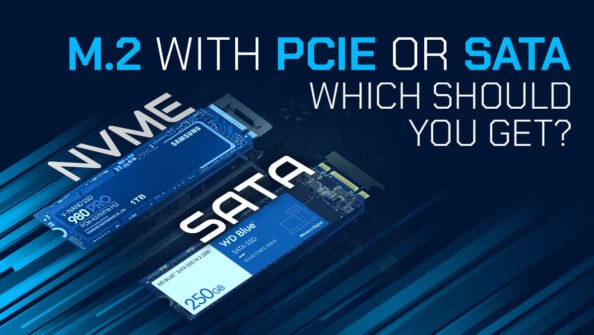
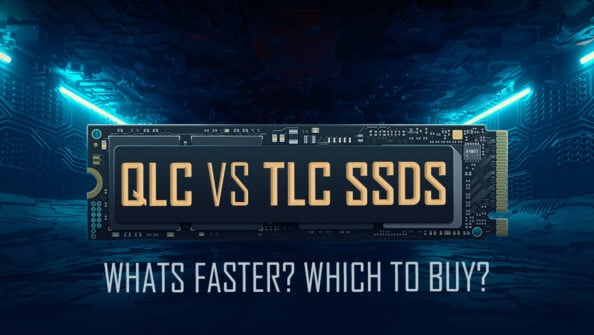
![The Best SSD Brands in 2023 [Updated] The Best SSD Brands in 2023 [Updated]](https://www.cgdirector.com/wp-content/uploads/media/2023/06/The-Best-SSD-Brands-Explained-Twitter-594x335.jpg)

11 Comments
22 March, 2024
I’m curious about the adhesive strip for the heat sink that’s included in the box with the NVMe SSD. What’s best practice with these strips? Should they be used always, sometimes, or never?
22 November, 2023
Just built box with samsung 990 pro 2TB PCIe4.0 on PCIe 5.0 slot on Proart x670 m/board, no problem. Graphics is Gigabyte Windforce V2 RTX4090 which does not cover the drive and allows the supplied heat sink to vent OK. Enough air movement in Fractal Meshify2C case. Not moved stacks of data though!. Mainly for Rhino and Blender work. Fast boot though, Win 11 ground up build. Got almost as good as Black Friday deal a couple of months back, but pleased to see price drop. Would recommend using supplied or aftermarket heat sink for this drive for peace of mind. PCIe 5.0 speed drives will de4ifinitely be warm!
23 November, 2023
Sounds great, thanks for letting us know of your experience! 🙂
Cheers,
Alex
22 November, 2023
Hi i’m considering buying a Samsung 990 PRO SSD – due to the blackfriday deals also I need to expand my storage..
I only have an ASUS zenbook ux461fn with pcie 3.0 x4. (in summary limited to 4MB/s)
I read that 4th gen ssd can work in 3rd gen hardware,
though everyone saying this specific ssd needs a heatsink.
perhaps it would not need a heatsink due to the fact that it’s limited by 3rd gen hardware?
you think i should get it anway? i’ve almost forgot to mention – there is no room for heatsink in this specific pc so I’m hoping it will last.
22 November, 2023
* pcie 3.0 x4 – limited to 4000MB/s
22 November, 2023
Tough call. Why not just get a 3rd gen NVMe without a heatsink?
22 November, 2023
hmm because there’s a really good discount on it – plus i can move it directly to my future pc that would probably support the speeds (with all my data).
also now i see a video with some “heating pad”
do you think it’s sufficient?
https://www.youtube.com/watch?v=8zZMqwAMbyo&t=273s
2:47
thanks a lot for the quick response
22 November, 2023
that should work, then!
22 November, 2023
I just put one (990 2TB) as the heart of a new build PC on PCIe 5 slot even though it runs at 4.0 speed. Fast boot. It’s on a motherboard that supplies heatsink and is not covered by the 3 slot graphics card…. Definitely recommend heatsink at these speeds and reasonable airflow!.
23 November, 2023
Thanks Tim, that’s what we’ve found as well! Have you tried copying of big files for a few minutes to see if the performance stays consistent?
Thanks,
Alex
26 November, 2023
Probably lack enough big files yet. Mostly Rhino product and architectural stuff generally sub 100Mb each, some tiny. Oh for the days of a project on a single 3.5 floppy! Will try in a few weeks time, thanks Alex.